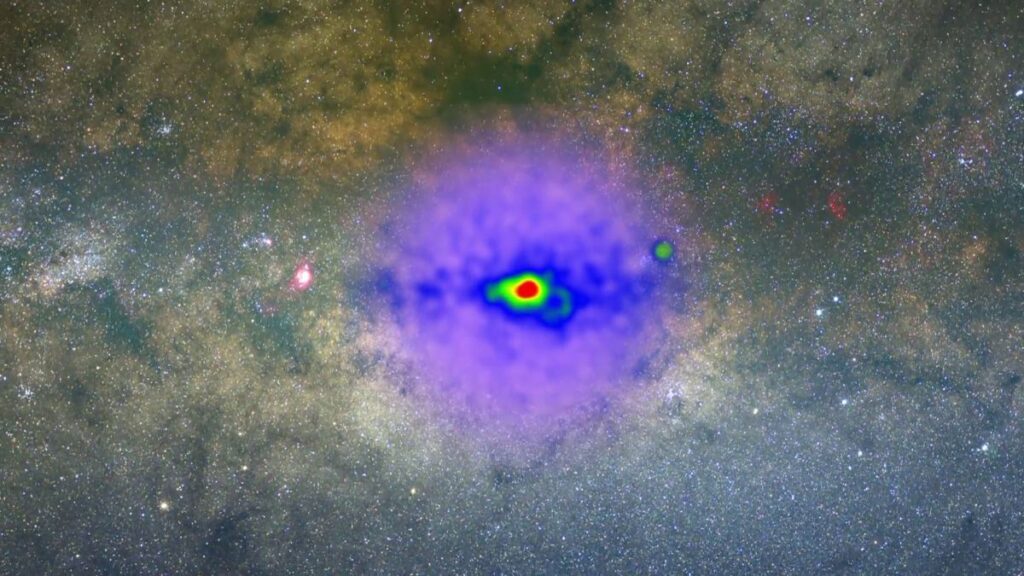
A newly conducted study suggests that a mysterious gamma-ray glow from the center of the Milky Way may provide crucial insights into dark matter. This glow, referred to as the Galactic Center GeV Excess (GCE), could be the result of dark matter particles colliding and annihilating each other, according to researchers. Their findings indicate that this phenomenon might be a stronger explanation than the presence of millisecond pulsars, another leading candidate for the source of the gamma-ray emissions.
The GCE was first discovered in 2009 through data collected by NASA’s Fermi Gamma-ray Space Telescope. Since then, astronomers have been puzzled by this anomaly, which produces an excess of gamma radiation in the highest-energy form of light known. Current theories propose two primary sources for this glow: dark matter and millisecond pulsars. Dark matter, which accounts for a significant portion of the universe’s mass, remains largely undetected and elusive, while millisecond pulsars are extremely rapid-spinning neutron stars that emit beams of radiation.
Research led by cosmologist Moorits Mihkel Muru from the Leibniz Institute for Astrophysics Potsdam utilized supercomputers to model the density and distribution of dark matter in a Milky Way-like galaxy. The simulations aimed to understand whether the distinct boxy shape of the GCE could entirely rule out dark matter annihilation as a potential source.
In their analysis, the team compared the gamma-ray emissions with the distribution of old stars, which serve as proxies for millisecond pulsars. They observed that the dark matter halo around the Milky Way is not perfectly spherical, but rather slightly flattened due to the galaxy’s history of mergers with other galaxies. This flattening, when projected onto sky maps, could produce a gamma-ray glow characteristic of dark matter annihilation.
The researchers concluded that both hypotheses—dark matter annihilation and millisecond pulsars—remain equally plausible based on various factors, including morphology and intensity. However, they noted a slight advantage for the dark matter hypothesis, particularly concerning the observed deficiency in millisecond pulsars, which leaves room for the dark matter explanation to be more favorable.
While the GCE’s large-scale shape does not definitively rule out dark matter, some observations have shown patterns that suggest a connection to point sources like millisecond pulsars. This small-scale texture has been explored in other studies, indicating that there might be a combination of both sources contributing to the gamma radiation at the galactic center.
The study underscores the importance of upcoming observational projects, such as the Cherenkov Telescope Array and the Southern Wide-field Gamma-ray Observatory. These future endeavors could provide critical data that helps distinguish between the dark matter and pulsar scenarios.
As noted by Joseph Silk, an astrophysicist at Johns Hopkins University, “It’s possible we will see the new data and confirm one theory over the other. Or maybe we’ll find nothing, in which case it’ll be an even greater mystery to resolve.”
The findings from this research have been published in the scientific journal Physical Review Letters, marking a significant step in the ongoing quest to understand the fundamental nature of dark matter and its role in the cosmos.





